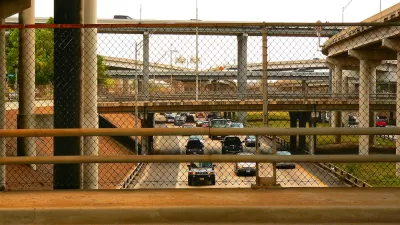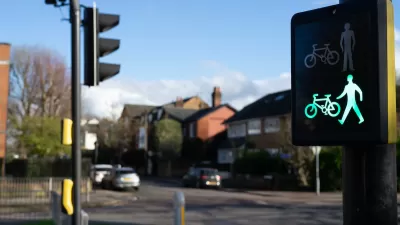A feature article at the major local daily newspaper in Houston tackles traffic safety and puts the onus on engineers, police, and politicians to come to terms with the destruction they've wrought.

A big, feature article by Dug Begley and St. John Barned-Smith for the Houston Chronicle examines the danger on the roads of the most populous city in Texas, with findings from the Houston Chronicle's own analysis of statistics from the National Highway Traffic Safety Administration.
"We drive past the crashes, numbed to their frequency, by how they add up. But they do: 640 people a year die on Houston-area roads, and 2,850 more are seriously injured," writes Begley and Barned-Smith. "The carnage, all factors considered, makes Houston the most deadly major metro area in the nation for drivers, passengers and people in their path…"
After providing several additional types of data to further the point about the lack of safety on Houston's roads, the article digs into the contributing factors to traffic fatalities (no victim blaming here, but also no discussion of distracted driving), naming longer commutes, poor road design, paltry enforcement, lack of political will, and a lack of space for other, safer modes. Also, the article endeavors to do what society fails to do every day: put a human face to the tragedy of traffic fatalities.
The article also includes infographics, and is supplemented by a story map that visualizes the death toll of an average week—11 fatal crashes and 12 deaths. Traffic fatalities occur pretty much everywhere around the city, according to the article, but also more frequently at specific intersections.
FULL STORY: Out of Control

Planetizen Federal Action Tracker
A weekly monitor of how Trump’s orders and actions are impacting planners and planning in America.

Chicago’s Ghost Rails
Just beneath the surface of the modern city lie the remnants of its expansive early 20th-century streetcar system.

San Antonio and Austin are Fusing Into one Massive Megaregion
The region spanning the two central Texas cities is growing fast, posing challenges for local infrastructure and water supplies.

Since Zion's Shuttles Went Electric “The Smog is Gone”
Visitors to Zion National Park can enjoy the canyon via the nation’s first fully electric park shuttle system.

Trump Distributing DOT Safety Funds at 1/10 Rate of Biden
Funds for Safe Streets and other transportation safety and equity programs are being held up by administrative reviews and conflicts with the Trump administration’s priorities.

German Cities Subsidize Taxis for Women Amid Wave of Violence
Free or low-cost taxi rides can help women navigate cities more safely, but critics say the programs don't address the root causes of violence against women.
Urban Design for Planners 1: Software Tools
This six-course series explores essential urban design concepts using open source software and equips planners with the tools they need to participate fully in the urban design process.
Planning for Universal Design
Learn the tools for implementing Universal Design in planning regulations.
planning NEXT
Appalachian Highlands Housing Partners
Mpact (founded as Rail~Volution)
City of Camden Redevelopment Agency
City of Astoria
City of Portland
City of Laramie





























